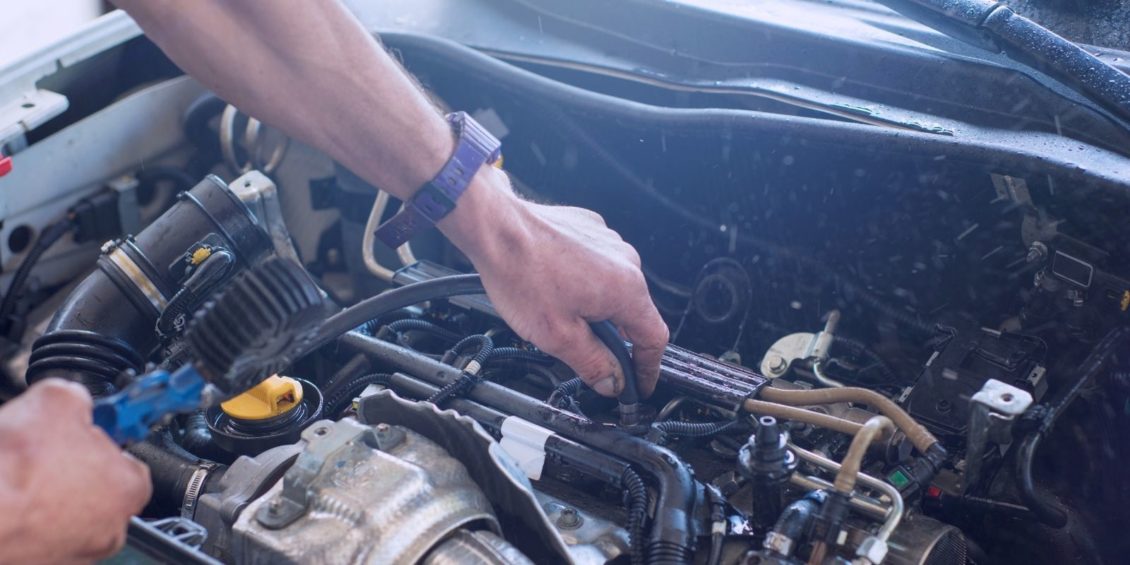Fuel is stored in the fuel system so it can be delivered to the combustion chamber, where it is combined with air, vaporized, and burned to generate energy. Whether it is gasoline or diesel, fuel is stored in fuel tanks. Fuel is drawn from the tank through fuel lines and delivered to the cylinder chamber by means of a fuel pump for combustion, or it may be delivered by means of a carburetor or fuel injector.
Your vehicle has either a mechanical or an electronic fuel system. The majority of modern vehicles use an electronic fuel system. It is the fuel pump’s job to pressurize fuel in the tank of a vehicle and send it to the engine. We will focus on the electronic fuel system in this article since it is most common.
Engines with electronic fuel systems have injectors that squirt fuel into the combustion chambers. This system is controlled by a computer, which monitors the throttle, the fuel-air ratio, and the exhaust content. Fuel is pumped through the system by the fuel pump, which is powered and controlled electronically. The fuel pump is usually found inside the fuel tank.
Fuel Filter
Gas from your fuel tank powers the engine of your car. Nevertheless, particulates such as dirt and debris may negatively affect the performance of your engine. In this fuel filter, these impurities are caught before they reach your engine, ensuring that only pure gasoline enters your vehicle. Your fuel filter prevents the entry of particulates into your engine by capturing them in a thin film. The fuel strainer on modern cars can only be replaced once the full fuel assembly is installed.
Fuel filters catch dirt and other debris like any other filter. With time, your car’s fuel filter can become clogged and dirty, which may negatively impact its performance, allowing fuel with particulate matter to enter your fuel injectors or stopping the correct flow of fuel. As fuels become purer, fuel filters can function optimally for up to 100,000 kilometers. Earlier in the industry, a fuel filter is supposed to last 30,000 to 60,000 km. If you change your fuel filter for the first time above 150,000 kilometers, you may cause engine failure; this is mostly due to your fuel pump having to work harder to overcome the dirty filter. Changing your filters should be done with caution at these mileages.
Fuel Pump
When a car is powered by an internal combustion engine, the fuel pump is a vital component. Fuel is fed to the fuel injection system by gravity feed from the fuel tank or under high pressure in older motorcycle engines.
The mechanical fuel pump is no different from any other pump, from the very first pumps which sucked water from the ground to the engines mounted on the block. Every type of mechanical pump functions the same way. A rod attached to a diaphragm produces a vacuum that pulls fuel from the tank and pushes it to the carburetor or injectors when it is stroked.
Fuel pumps used to deliver fuel to the carburetor bowl with relatively low pressure in the days of carburetors.
Fix and maintenance
To determine whether your fuel pump is actually bad, you must first check and confirm. If you think you have a bad fuel pump, you can check a number of ways. Low pressure in the engine is one of the telltale signs of a faulty fuel pump. If the fuel pump is malfunctioning, the engine’s air-fuel ratio will be disturbed, which will compromise the car’s performance.
If you run your vehicle with a bad fuel pump, the pump’s motor will quickly wear out. The overheating of the engine is another sign that there is a problem with the fuel pump. Nevertheless, there are ways to fix a fuel pump without replacing it.
Sourse of information:








Leave a Reply
View Comments